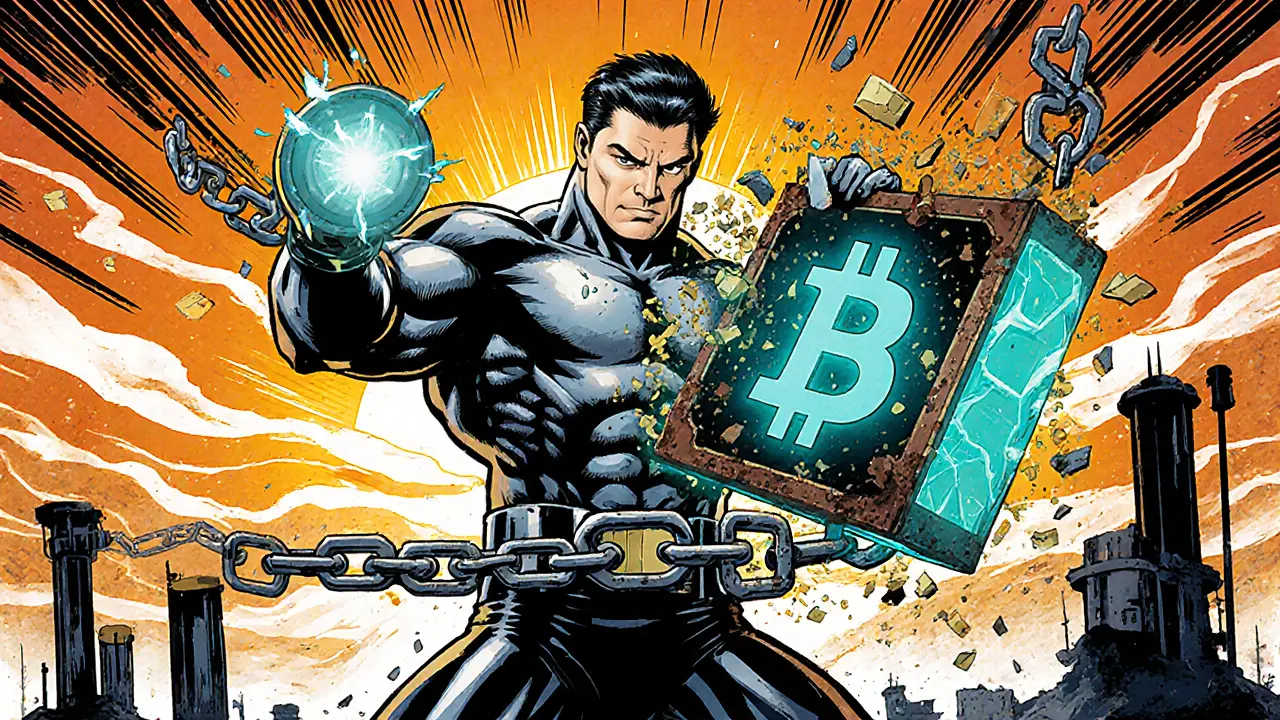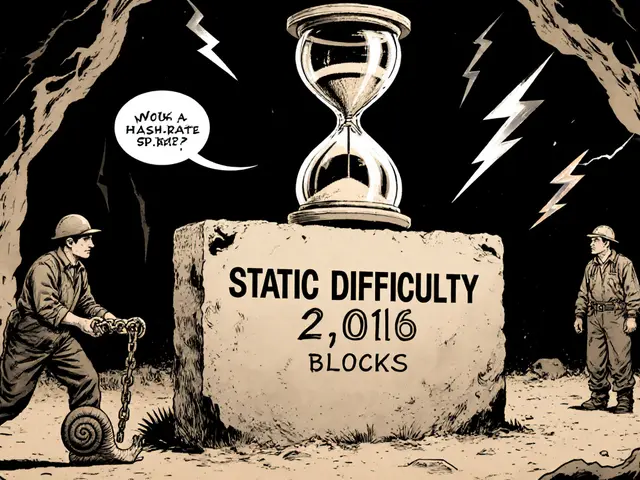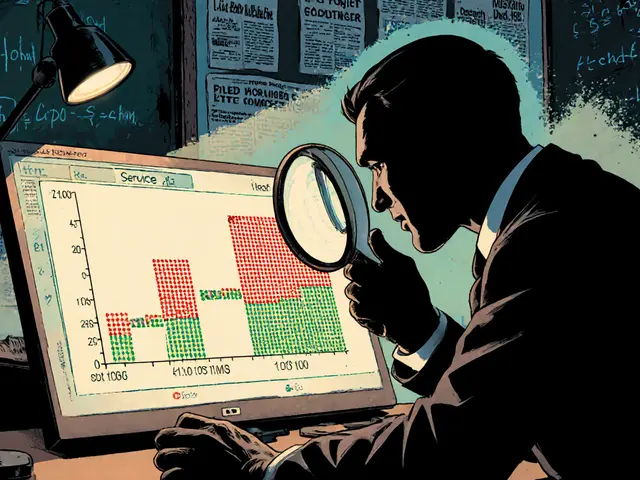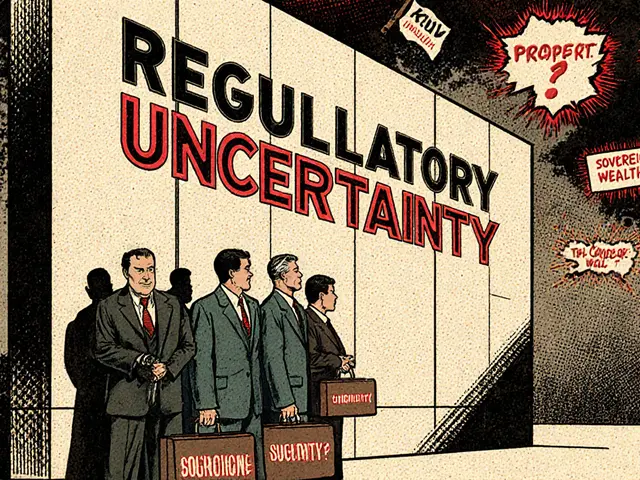
Bitcoin Mining Pool Centralization Tracker
Top Mining Pools Distribution
Centralization Risk Assessment
Based on current data, the top 6 pools control 95% of the network. This level of concentration poses significant risks to Bitcoin's decentralization and security.
Risk Level: HIGH - Centralization exceeds recommended thresholds for network security.
Key Metrics
- Total Pools 6
- Top Pool Share 22%
- Network Share Held 95%
- Geographic Clustering 4 pools from China
Your Contribution
With your 10 ThaHash/s, you represent 0.0067% of the network.
This is a very small contribution to the overall network security.
When you hear the word mining pool centralization, you probably picture a handful of giants deciding which transactions get confirmed and who earns the block reward. That image isn’t far from reality. As of October2025, six mining pools collectively control over 95% of Bitcoin’s total hash rate, turning a system designed for open participation into a de‑facto oligarchy. This article unpacks why that matters, how the numbers stack up, and what the community can actually do about it.
What Is a Mining Pool?
In the early days of Bitcoin, an individual could run a single ASIC or a GPU rig and still stand a reasonable chance of finding a block. Today, the network’s difficulty is so high that solo mining is almost always unprofitable. Mining pools are collaborative groups where miners contribute their computational power to a shared effort. When any miner in the pool solves the proof‑of‑work puzzle, the reward is split among participants in proportion to the hash power they supplied. The pool operator builds the block template-the list of transactions to be included-and distributes mining jobs to its members. This setup dramatically improves payout predictability but also concentrates two critical decisions: who gets paid and which transactions make it into the blockchain.
How Mining Pools Operate Behind the Scenes
- Hash submission: Individual miners run the hashing algorithm on jobs received from the pool’s server.
- Block template creation: The pool operator selects transactions, orders them, and sets the coinbase reward.
- Payout calculation: Once a block is found, the pool credits each miner’s account based on their contributed work, using schemes like PPLNS, PPS, or PPS+.
Because the block template is crafted by a single entity, miners essentially outsource the “what” of mining while retaining the “how” of the hash calculation.
Current Mining Pool Landscape (2025)
Recent measurements from blockchain explorer APIs show the following distribution of Bitcoin’s hash rate among the top pools:
| Pool | Network Share | Region | Fee |
|---|---|---|---|
| Foundry USA | 22% | UnitedStates | 1.5% |
| AntPool (BTC.com) | 18% | China‑linked | 2.5% |
| BTC.com Pool | 15% | China‑linked | 2.0% |
| F2Pool | 12% | Asia (HongKong) | 2.5% |
| Poolin | 10% | China‑linked | 2.0% |
| Slush Pool | 8% | CzechRepublic | 1.0% |
| Others | 15% | Various | Varies |
Notice how four of the six dominant pools have direct ties to China, even after the 2021 regulatory crackdown. Geographic clustering adds another layer of systemic risk.
Security Implications of Concentrated Power
When a single pool controls more than 40% of the total hash rate, the probability of winning six consecutive blocks jumps to roughly 50%. That scenario isn’t just a statistical curiosity- it approaches the infamous 51% attack threshold. With fewer independent block‑template creators, the network faces three intertwined threats:
- Censorship: A dominant pool could simply refuse to include certain transactions, effectively blacklisting addresses or smart‑contract interactions.
- Double‑spend attacks: By temporarily re‑organizing the chain, a large pool can reverse recent transactions, undermining merchant confidence.
- Protocol manipulation: Coordinated pools might push for rule changes that favor their hardware or location, marginalizing smaller miners.
While no coordinated censorship event has materialized on Bitcoin yet, the reduced diversity of block producers makes such attacks technically easier and politically more tempting.

Economic Drivers Behind Centralization
Two main forces push miners toward big pools:
- Stable payouts: Large pools smooth out variance, offering near‑daily rewards. Solo miners could wait weeks for a single block.
- Infrastructure advantages: Big pools invest in low‑latency connectivity, robust server farms, and sophisticated mining software, which translates into higher effective hash rate per unit of electricity.
At the same time, these pools tend to charge higher fees-sometimes up to 2.5%-because miners accept the trade‑off for reliability. The net effect is a feedback loop: higher fees fund better infrastructure, which attracts more miners, further consolidating power.
Academic Perspectives: Does Pooling Truly Undermine Decentralization?
Research from Cornell, the University of Chicago, and George Mason offers a nuanced view. Cong, He, and Li (2024) argue that “risk‑sharing pools do not inherently break the permissionless nature of blockchains.” Their model shows that:
- Miners often hop between pools, preventing long‑term dominance by any single operator.
- Larger pools internalize the externality of their global hash‑rate impact by charging higher fees, which in turn slows their growth.
Nevertheless, the same studies highlight two downsides: the arms race for more efficient ASICs intensifies energy consumption, and the existence of proxy pools-small‑named pools that forward jobs to a bigger parent-makes the true concentration even worse than surface statistics suggest.
Potential Solutions and Ongoing Experiments
Addressing centralization isn’t a one‑size‑fits‑all problem. The community has explored several avenues:
- Protocol tweaks: Introducing a “pool‑self‑selection” rule that forces a pool to publish its block template before mining starts, allowing independent verification of transaction ordering.
- Incentive redesign: Reward schemes that give a small bonus to miners who switch pools frequently, encouraging hash‑rate diffusion.
- Alternative consensus: Proof‑of‑Stake (PoS) and hybrid models remove the need for massive hash power, but they face their own centralization challenges (e.g., token staking concentration).
- Decentralized mining protocols: Projects like Stratum V2 aim to shift block‑template creation to the miner side, limiting the pool operator’s control over transaction selection.
Implementation hurdles remain steep-large pools have a vested interest in maintaining the status quo, and any protocol change requires broad community consensus.
Practical Takeaways for Individual Miners
If you’re a miner deciding where to send your hash power, keep these points in mind:
- Check the pool’s hash‑rate share: Avoid pools that exceed 25% of the network unless you value the highest payout stability above decentralization concerns.
- Look for transparency: Pools that publish real‑time block‑template data and fee structures are generally more trustworthy.
- Consider multi‑pooling: Some mining software lets you split hash power across several pools, reducing reliance on any single operator.
- Watch geographic trends: If you live outside the major mining hubs, a regional pool may offer lower latency and lower fees, even if it’s smaller.
- Stay informed: Regulatory shifts (e.g., new US energy policies) can quickly reshape the pool landscape.
By spreading your hash power and staying vigilant, you help keep the network’s security margin wide.
Future Outlook
Mining pool centralization is unlikely to disappear overnight. Energy prices, ASIC efficiency gains, and regulatory environments will continue shaping the power balance. However, technical innovations like Stratum V2 and economic proposals that reward hash‑rate diffusion could curb the trend. The ultimate test will be whether the Bitcoin community can reconcile the practical need for reliable payouts with the ideological goal of a truly permissionless, decentralized ledger.

Frequently Asked Questions
Why do mining pools exist in the first place?
Solo mining has become uneconomical because the network’s difficulty requires terahashes of computation per second. Pools let individual miners combine hash power, dramatically increasing the odds of earning a block reward and providing steadier payouts.
How can I tell if a pool is part of a proxy network?
Proxy pools often forward mining jobs to a larger parent but retain their own coinbase address. Check the pool’s public statistics-if the hash‑rate spikes sharply after a small name appears, it may be a proxy. Community forums and block explorers sometimes list known proxy relationships.
What is the real risk of a 51% attack today?
If a single entity or colluding group controls over half of Bitcoin’s total hash rate, it could rewrite recent blocks, censor transactions, or double‑spend coins. While no such attack has succeeded on Bitcoin, the concentration of power in a few pools means the technical barrier is lower than the network’s original design intended.
Do higher pool fees mean less decentralization?
Higher fees fund better infrastructure and can attract more miners, which may increase that pool’s share of the network. In practice, the relationship is complex: some miners accept higher fees for reliability, while others seek low‑fee pools to keep costs down, spreading hash power across more operators.
Can Stratum V2 eliminate pool centralization?
Stratum V2 moves block‑template construction from the pool server to the miner’s software, reducing the pool’s ability to decide transaction ordering. It’s a step toward decentralization, but large pools still dominate the sheer amount of hash power they distribute, so the effect is partial rather than total.






There are 17 Comments
Kailey Shelton
Mining pools keep getting bigger and bigger.
Angela Yeager
When you spread your hash power across multiple pools you reduce the risk of any single operator gaining too much influence.
Look for pools that publish real‑time block template data so you can verify what transactions are being included.
Fee structures matter too; a slightly higher fee can fund better infrastructure and more transparent operations.
Geographic diversity also helps lower latency, which can improve overall efficiency.
Staying informed about regulatory changes in your region keeps you ahead of any sudden shifts in the mining landscape.
vipin kumar
The concentration we see isn’t just an economic outcome, it’s a symptom of deeper coordination.
Every time a pool crosses the thirty‑percent mark, the underlying network trust erodes incrementally.
Think about the fact that four of the six biggest pools have ties to a single nation’s infrastructure; that’s a geopolitical lever you can’t ignore.
The fees they charge aren’t merely for services, they fund a feedback loop that entrenches their dominance.
When you add the latency advantage of being physically close to the mining hardware manufacturers, the playing field tilts even more.
Even without overt collusion, the incentive structures push miners to flock to the biggest pools for stability.
That stability is a double‑edged sword: it smooths payouts but also masks the centralization risk.
Every block template they create can be subtly biased, censoring certain transaction types without the rest of the world noticing.
In a scenario where a single entity could temporarily control a majority of hash power, the door opens for double‑spend attacks.
It’s not a far‑fetched 51 % attack; it’s a realistic threat when the hash rate is so tightly clustered.
The loss of permissionless entry points means new miners face a barrier that is more political than technical.
Even if protocols like Stratum V2 aim to decentralize template creation, the sheer volume of hash power still flows through those dominant pools.
Ultimately, the network’s resilience depends not just on the code but on the distribution of the hardware that runs it.
Stay vigilant, diversify where you can, and keep pressure on the community to adopt truly decentralized solutions.
Lara Cocchetti
Allowing a handful of entities to dictate transaction ordering is a moral hazard of the highest order.
When profit motives override the principle of open access, the very ethos of Bitcoin is compromised.
Centralized pools become gatekeepers, and that’s an unacceptable concentration of power.
Every miner should consider the ethical implications of contributing to such an oligarchy.
Millsaps Delaine
The reality is that mining pools have become the de‑facto arbiters of the blockchain’s future.
Their fee structures, while ostensibly market‑driven, actually serve to reinforce their infrastructural superiority.
One must recognize the cascade effect: higher fees enable better servers, which attract more hash power, which in turn justifies even higher fees.
Such a self‑perpetuating cycle starkly contradicts the decentralizing promise made at Bitcoin’s inception.
Even when pools claim to be “transparent,” the opacity of proxy relationships obscures true power concentrations.
Moreover, the geographic clustering you highlighted – four of six major pools tied to a single nation – introduces a geopolitical vector that cannot be dismissed.
All these factors coalesce into a scenario where the network’s security margin is being silently eroded.
Jack Fans
Exactly!; Diversifying across pools not only mitigates risk, but also supports a healthier ecosystem; Most miners overlook the subtle benefits of low‑latency connections, which can boost overall efficiency; Keep an eye on fee differentials, they’re often a sign of underlying infrastructure investment; It’s also wise to monitor public stats for sudden spikes that could signal proxy activity; Stay proactive, and your contribution will remain both profitable and beneficial to the network.
Adetoyese Oluyomi-Deji Olugunna
One cannot simply dismiss the elegance of decentralization in favor of sheer hash power; Yet the current landscape betrays a troubling homogeneity that reeks of elitist consolidation; It is imperative that the community re-evaluates its reliance on a few behemoths; Otherwise we risk curating a narrative that glorifies efficiency while ignoring the subtleties of power dynamics.
Krithika Natarajan
Look for pools that share their block template data openly and keep an eye on the fee structure.
Vaishnavi Singh
We stand at a crossroads where technology meets philosophy.
The concentration of mining power challenges the notion of a truly permissionless system.
If we accept that reality, we must also accept the responsibility to seek alternatives.
Balancing efficiency with decentralization becomes a moral imperative.
Each miner’s choice contributes to the collective narrative of the network’s future.
Linda Welch
Oh, look, another reminder that the American mining scene is crushed under foreign dominance.
It’s almost comic how we keep talking about “freedom” while the hash power sits in the hands of overseas giants.
One would think we’d have learned something by now, but nope, the same old story repeats.
The only thing missing is a patriotic anthem playing in the background while we watch the numbers rise.
Kevin Fellows
Don’t let the odds discourage you; even a small share of hash power can make a difference.
Keep experimenting with different pools to see which one feels right for you.
Remember, the network thrives on diverse participation.
Stay upbeat and keep mining!
meredith farmer
The drama surrounding these pools is more than just numbers; it’s a narrative about power and control that fuels endless speculation.
Every time a pool reaches a new milestone, the whispers of conspiracy grow louder.
Yet the reality is that the economic incentives are the true puppeteers behind the scenes.
It’s a tangled web of profit, privacy, and political maneuvering.
We must watch closely and question the motives behind each shift.
Peter Johansson
Great point! 🌟 Keeping your hash power spread out not only helps the network but also gives you a safety net.
If one pool faces issues, you’re still contributing elsewhere.
Think of it like diversifying a portfolio – it’s just smart mining.
Keep up the good work! 😊
Cindy Hernandez
Mining pool centralization is a multifaceted challenge that requires both technical and community-driven responses.
First, miners should regularly audit the distribution of hash power using publicly available trackers to stay informed about dominant pools.
Second, selecting pools that openly disclose their block templates and fee structures enhances transparency and mitigates hidden centralization.
Third, consider multi‑pool strategies where your hardware can dynamically allocate hash power based on real‑time pool performance metrics.
Fourth, stay aware of geographic clustering; opting for pools with lower latency in your region can improve efficiency while diversifying the network’s geographical footprint.
Fifth, participate in community discussions around protocol upgrades like Stratum V2, which aim to shift block‑template creation to the miner side, reducing the operator’s control over transaction ordering.
Sixth, support research initiatives that explore alternative consensus mechanisms, acknowledging that proof‑of‑work is not the sole path to security.
Seventh, educate newcomers about the trade‑offs between payout stability and network decentralization, fostering a culture of informed decision‑making.
Eighth, monitor regulatory developments, as policy shifts can rapidly alter the mining landscape and affect pool centralization trends.
Finally, encourage collaborative development of open‑source mining software that prioritizes decentralization features, ensuring that the tools available to miners align with the ethos of a permissionless network.
Karl Livingston
The network’s health is like a garden; you need diverse plants to keep pests away.
When you only have a few big trees, a single storm can topple them all.
Mixing up pools is the watering can that keeps everything thriving.
Each miner’s choice adds a splash of color to the broader picture.
Stay curious, stay varied.
Kyle Hidding
Another layer of centralized gloom adds to the already toxic atmosphere; the jargon-laden incentives are a veil for oppressive control; this escalation erodes any semblance of decentralized autonomy.
Andrea Tan
Nice overview, thanks for sharing.
Write a comment
Your email address will not be published. Required fields are marked *